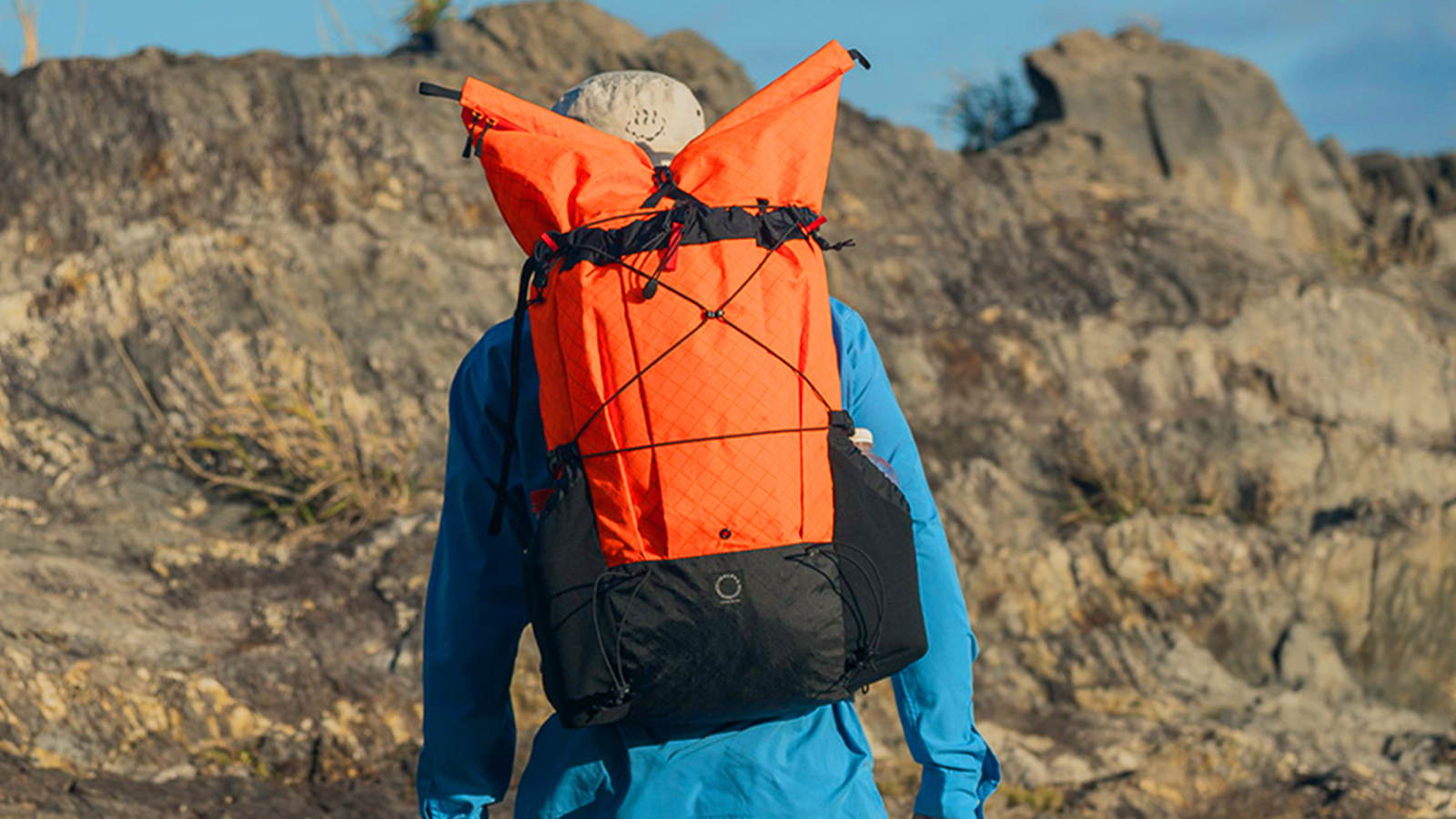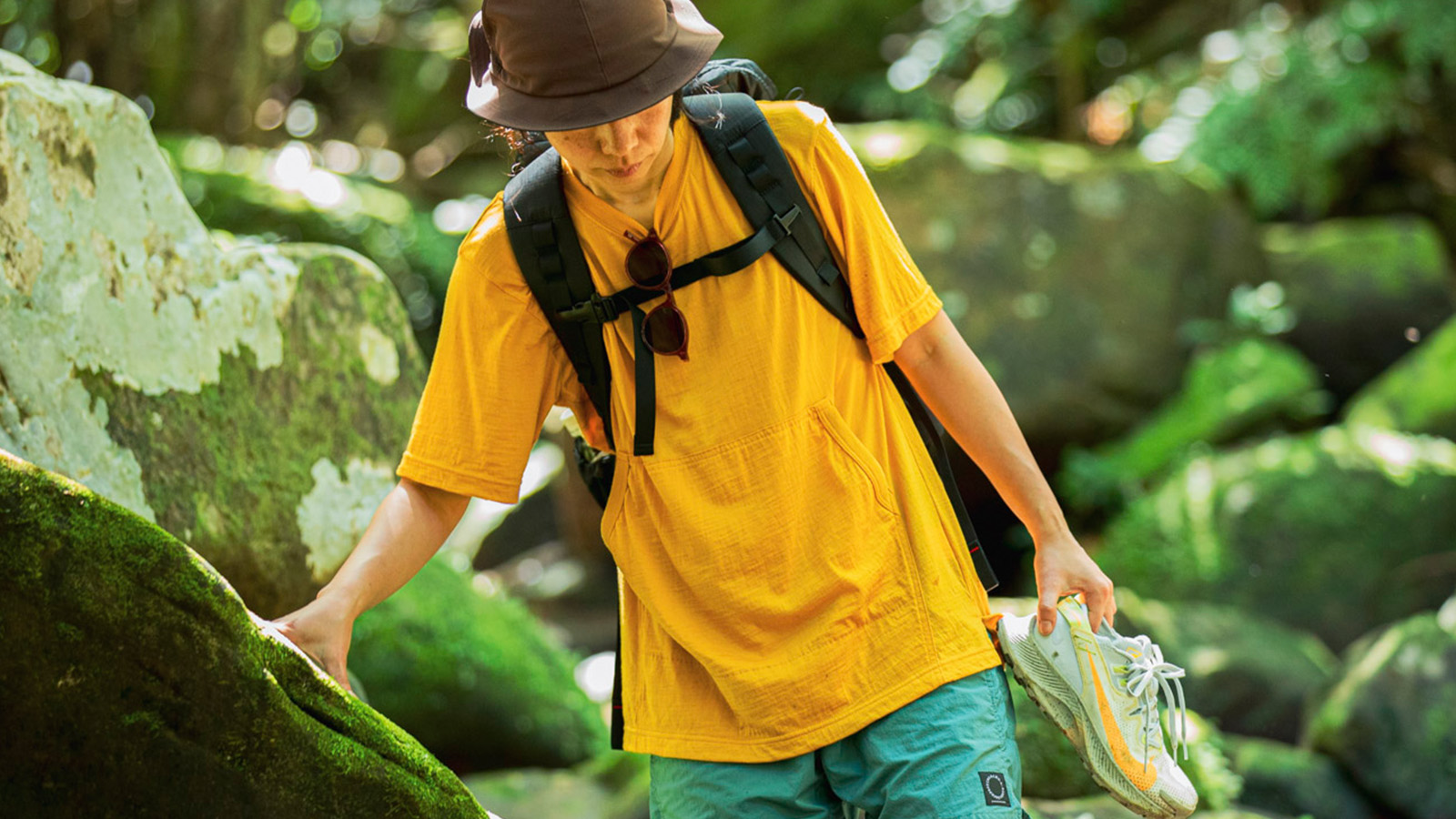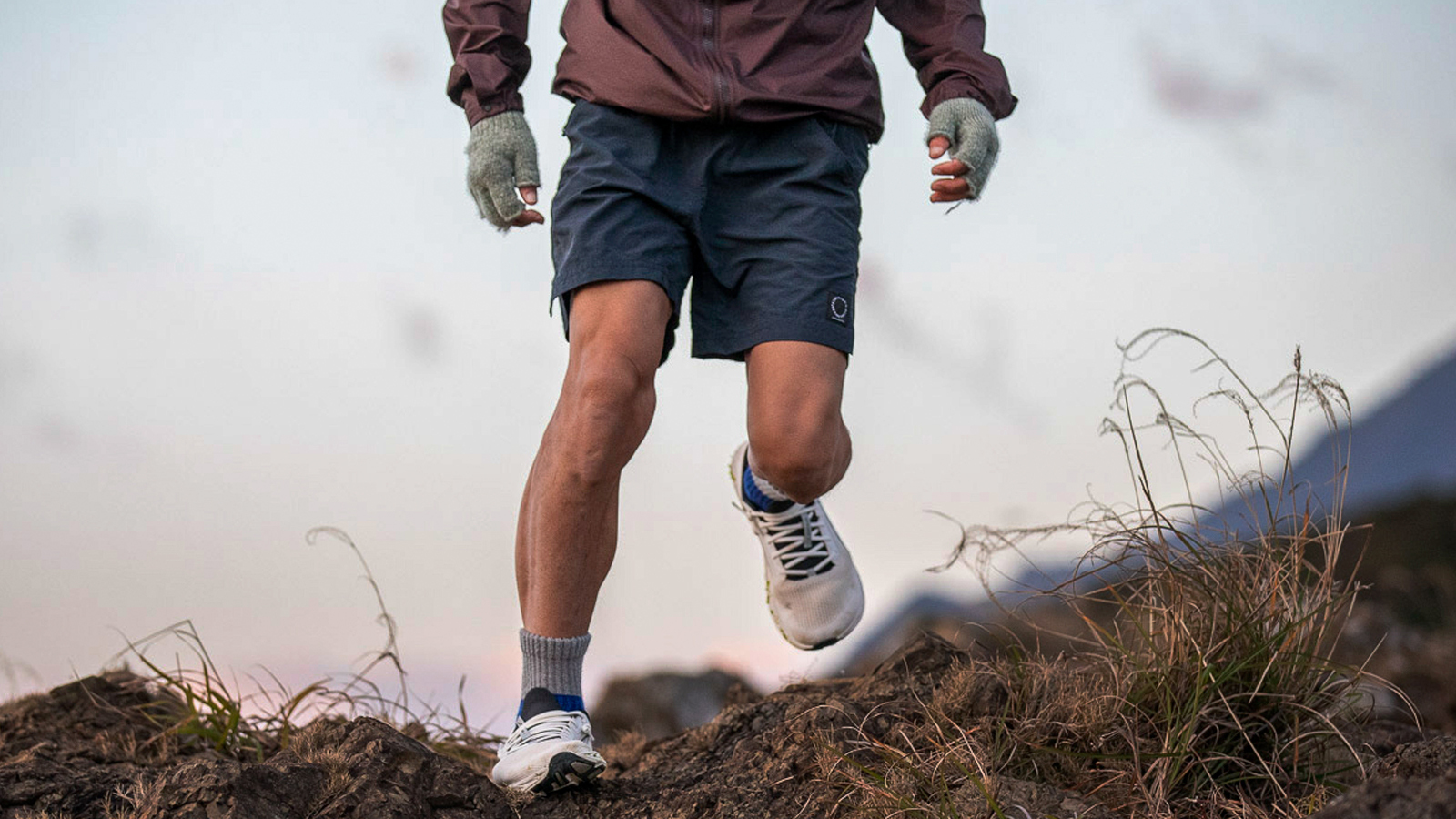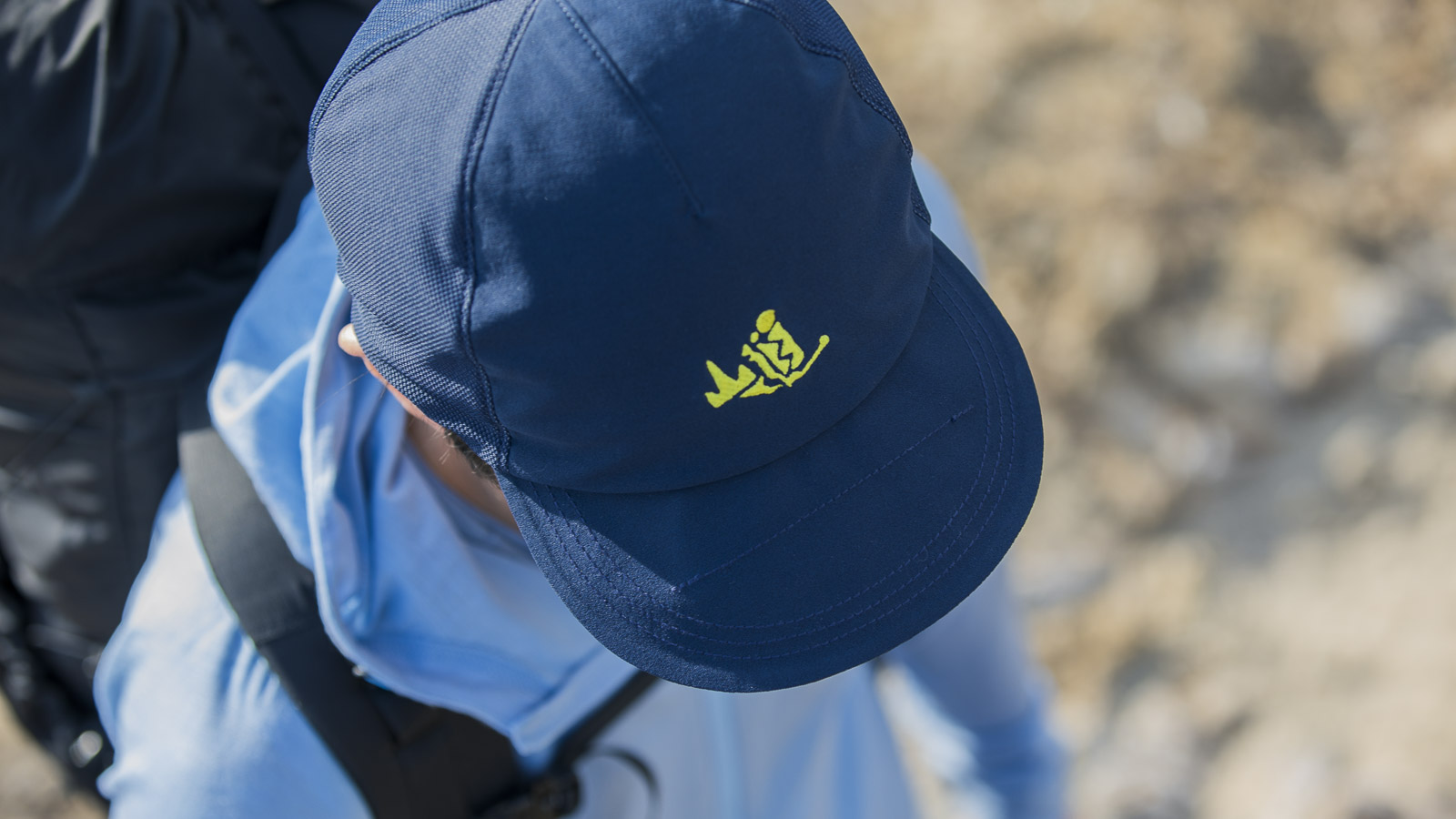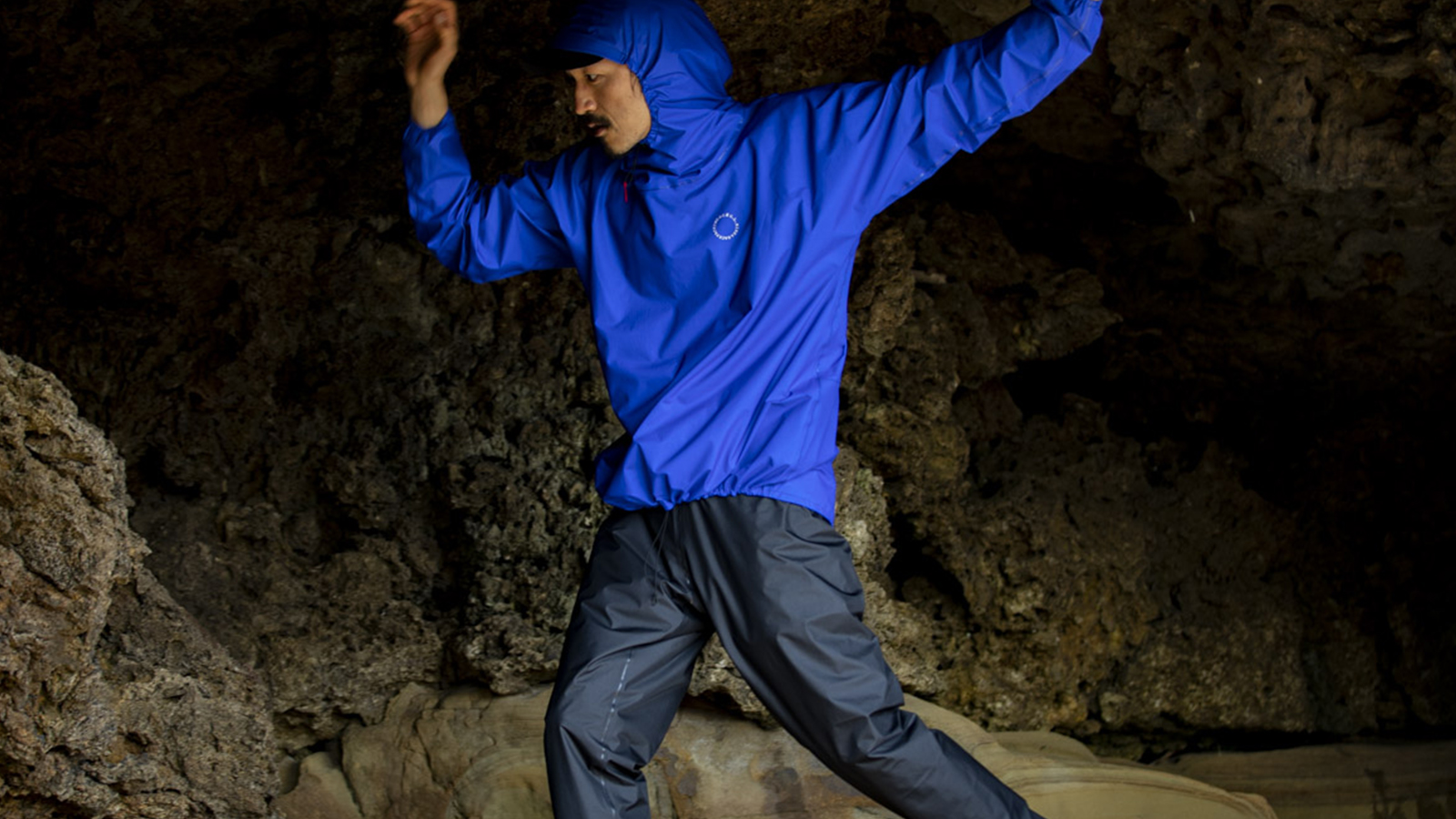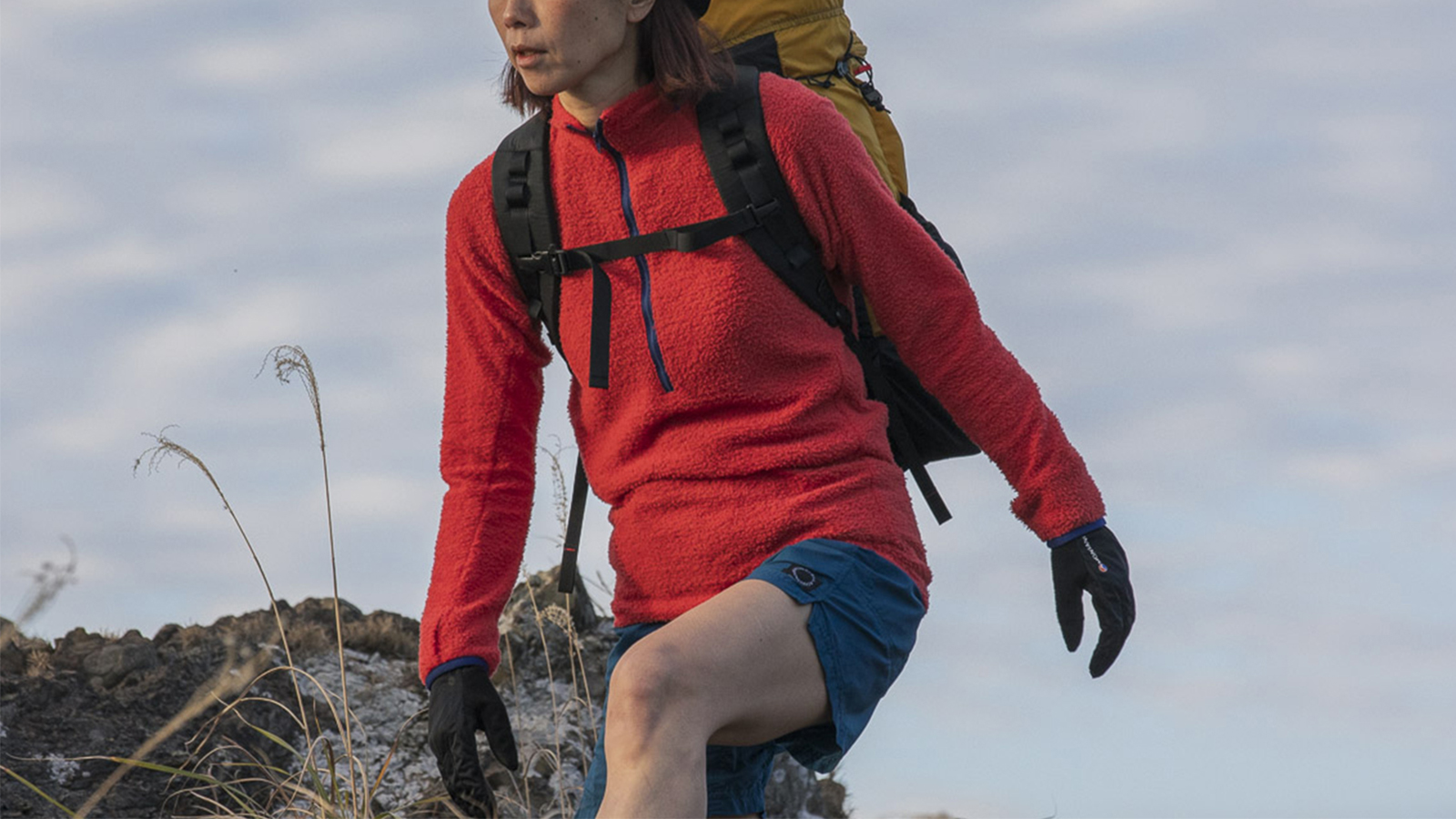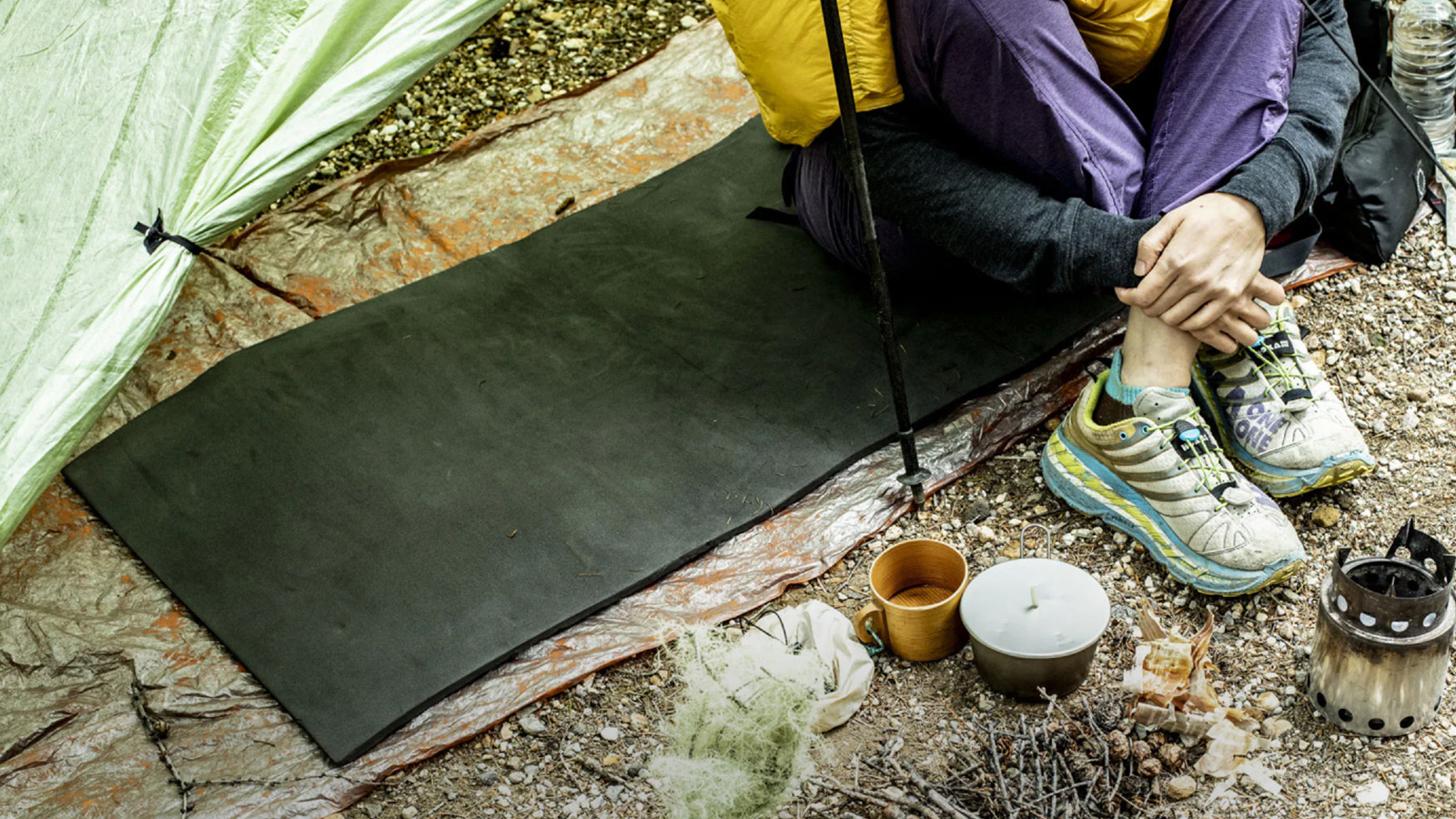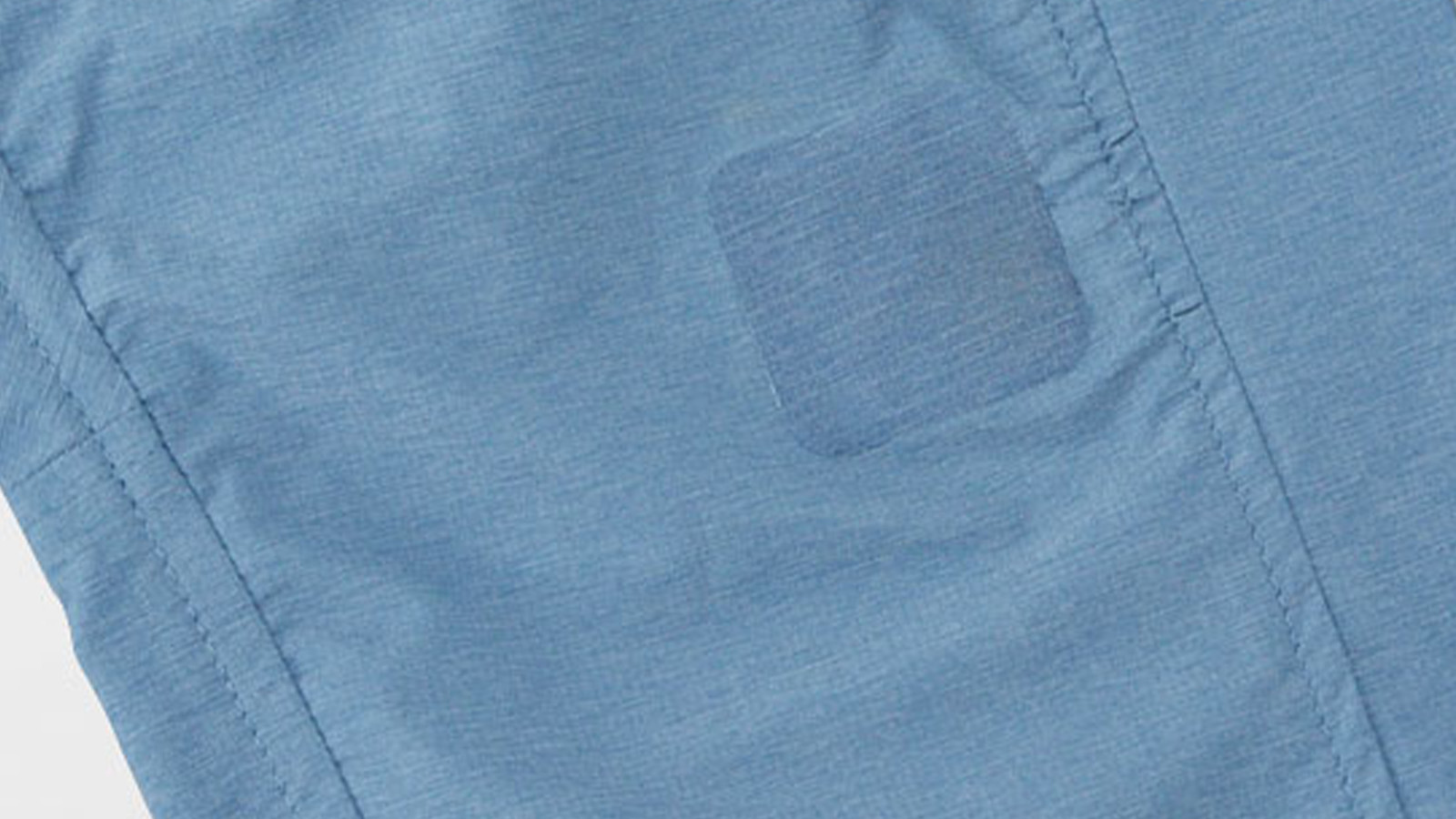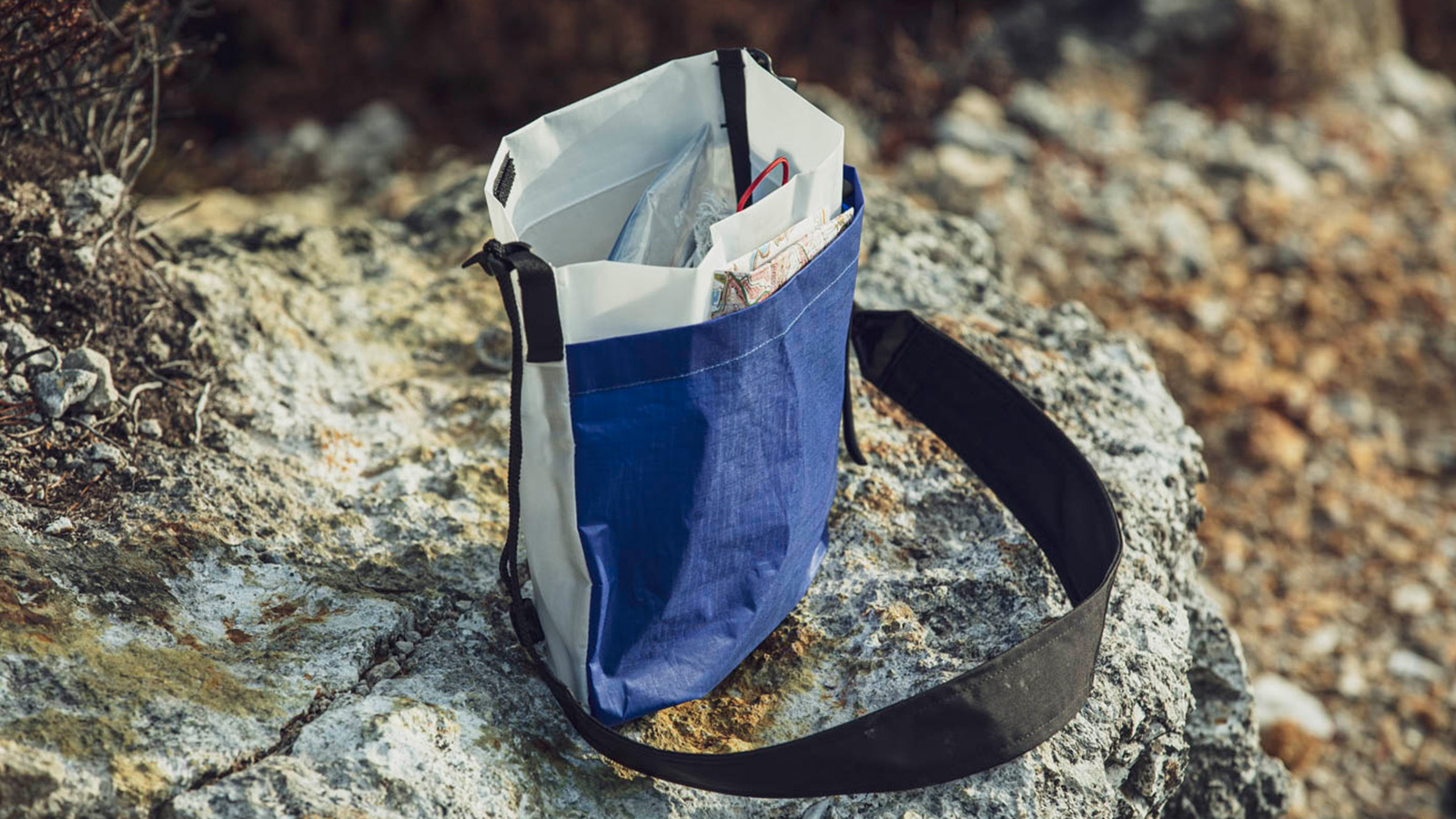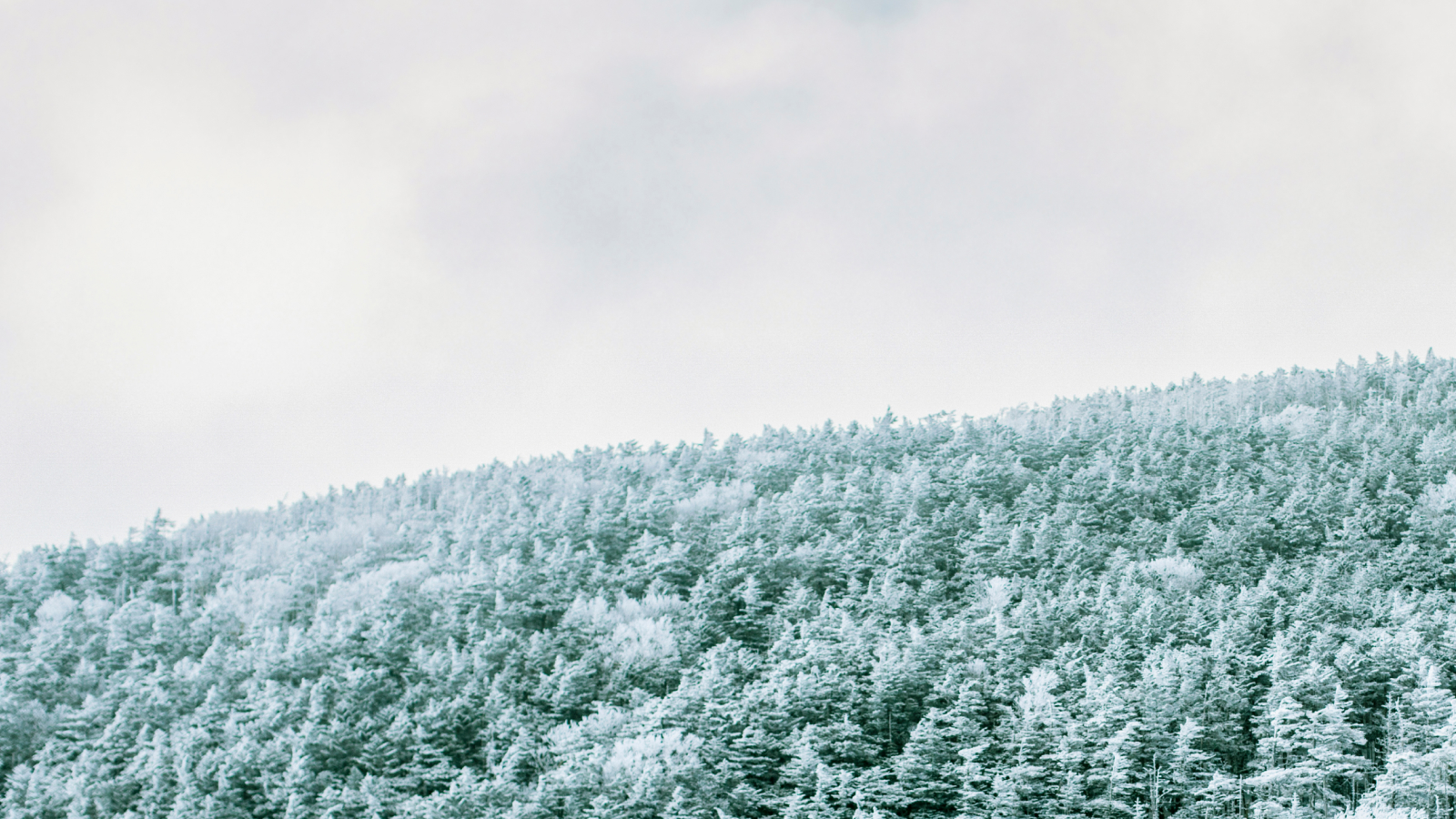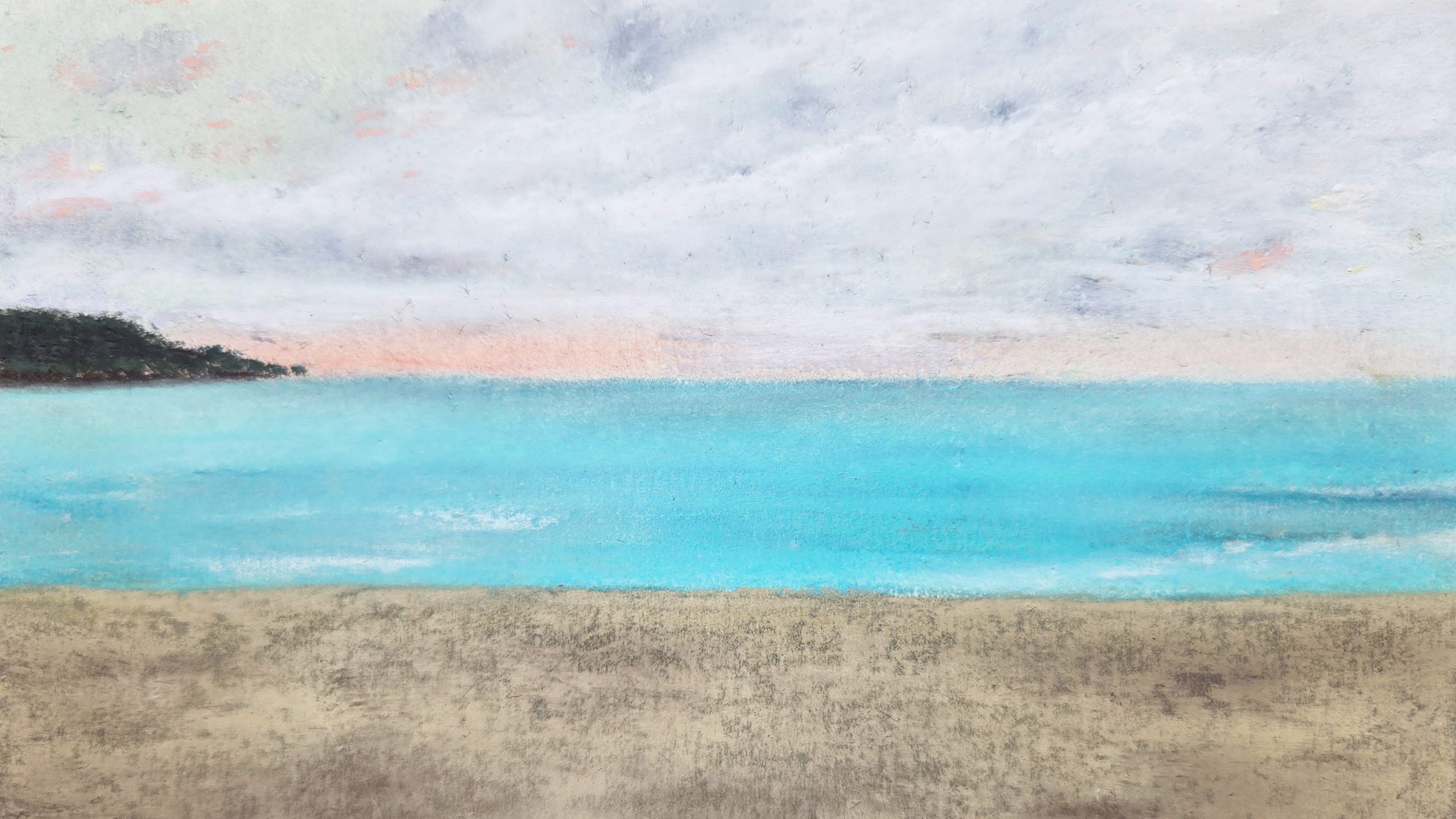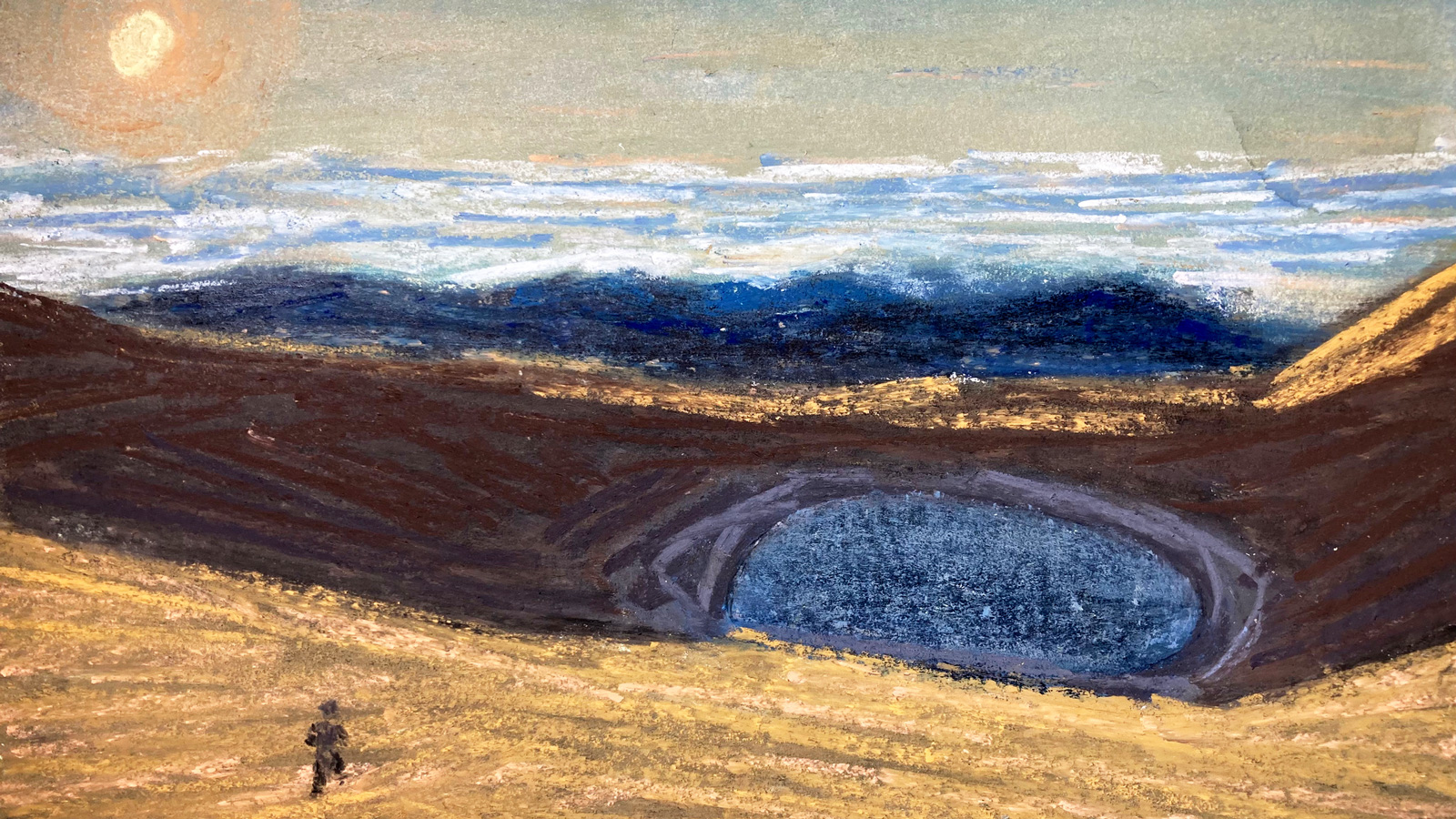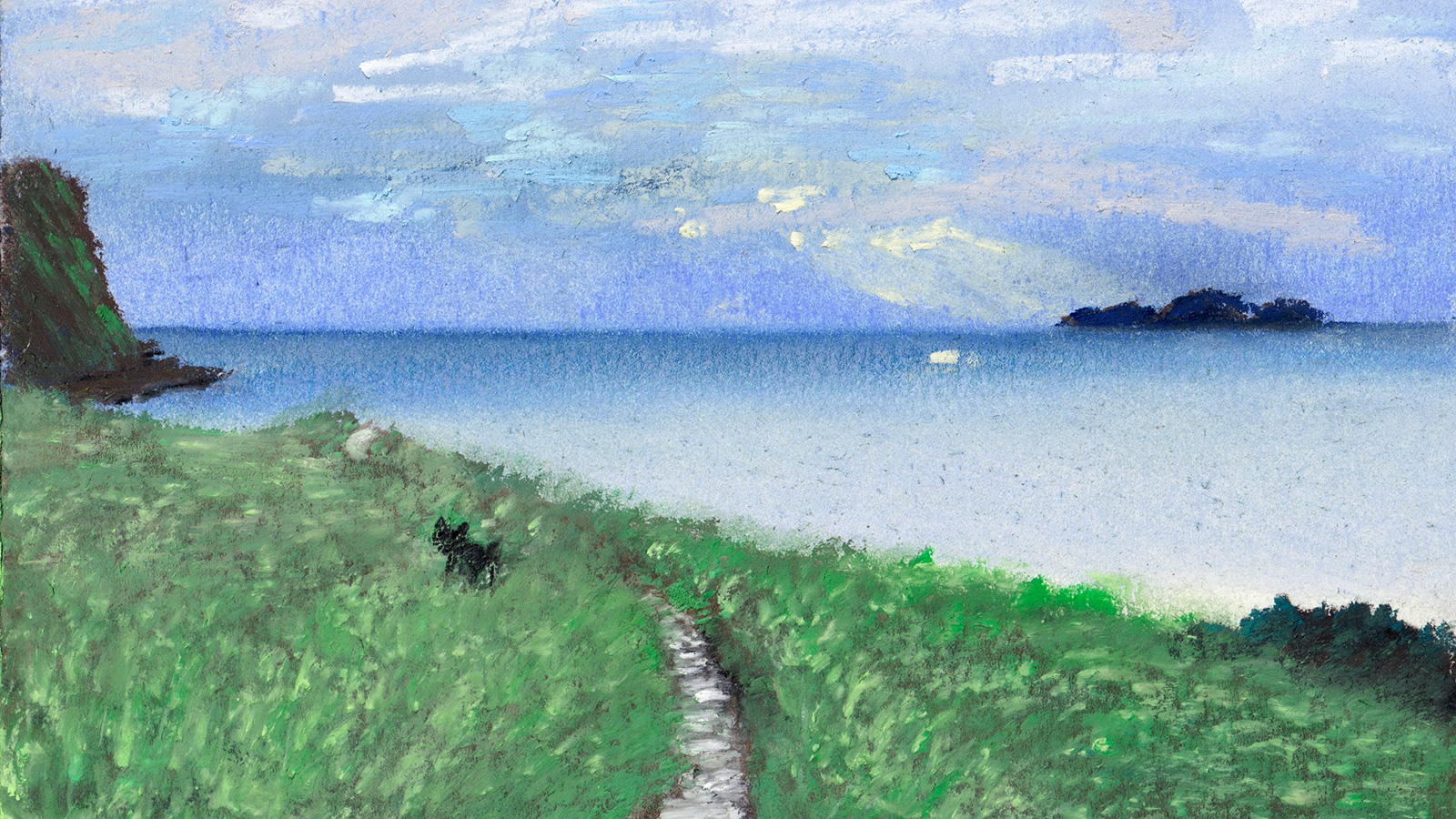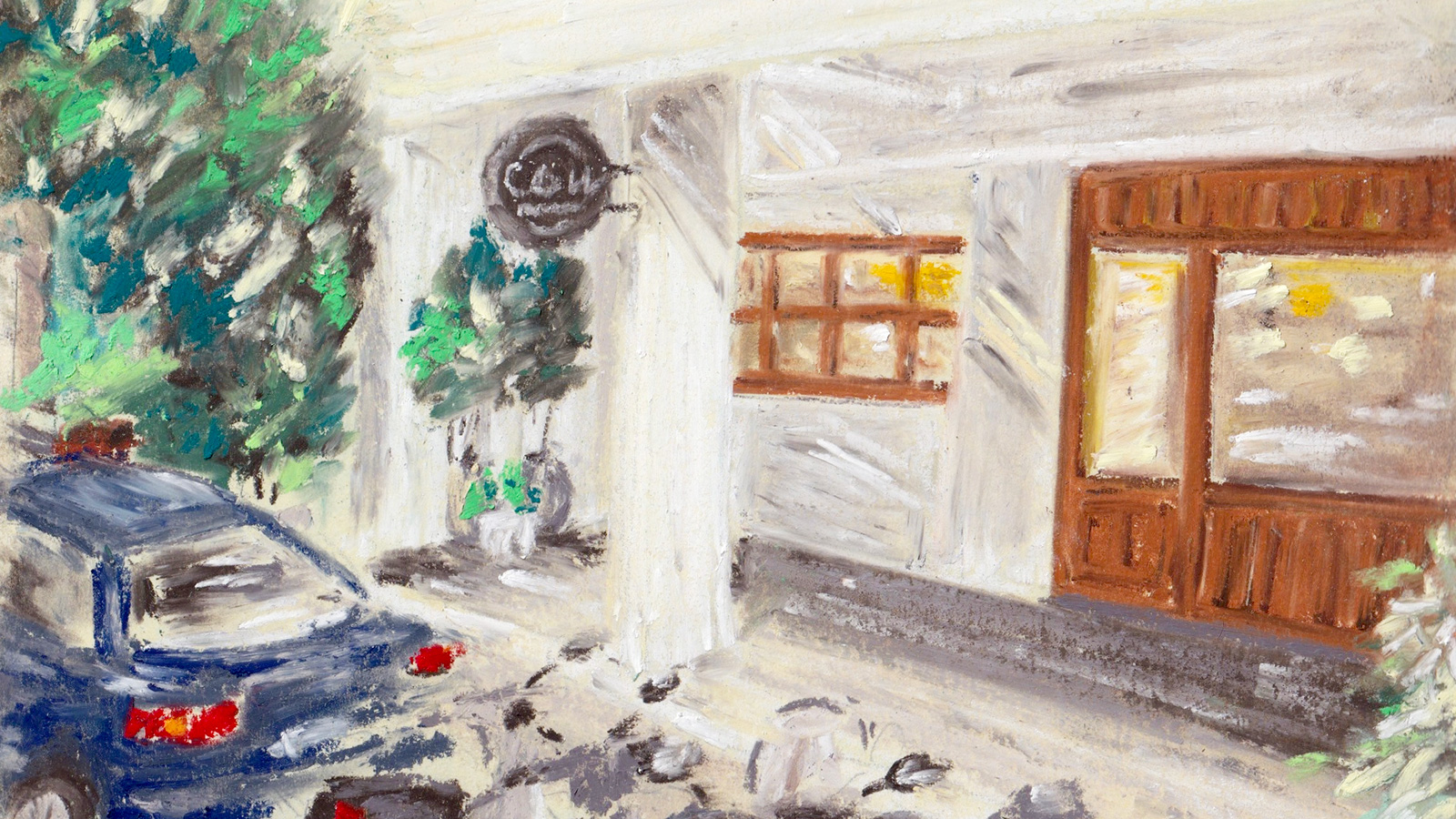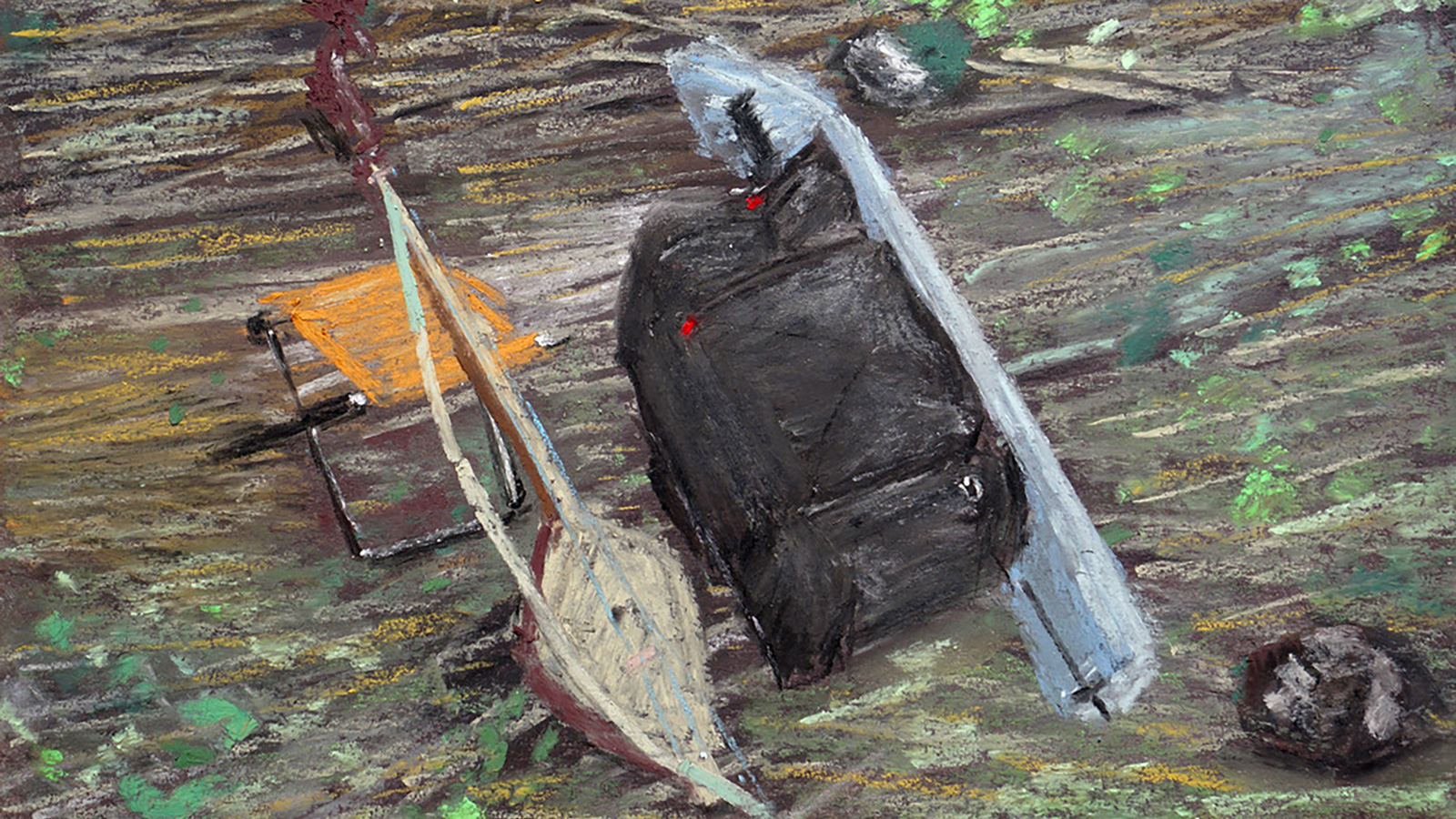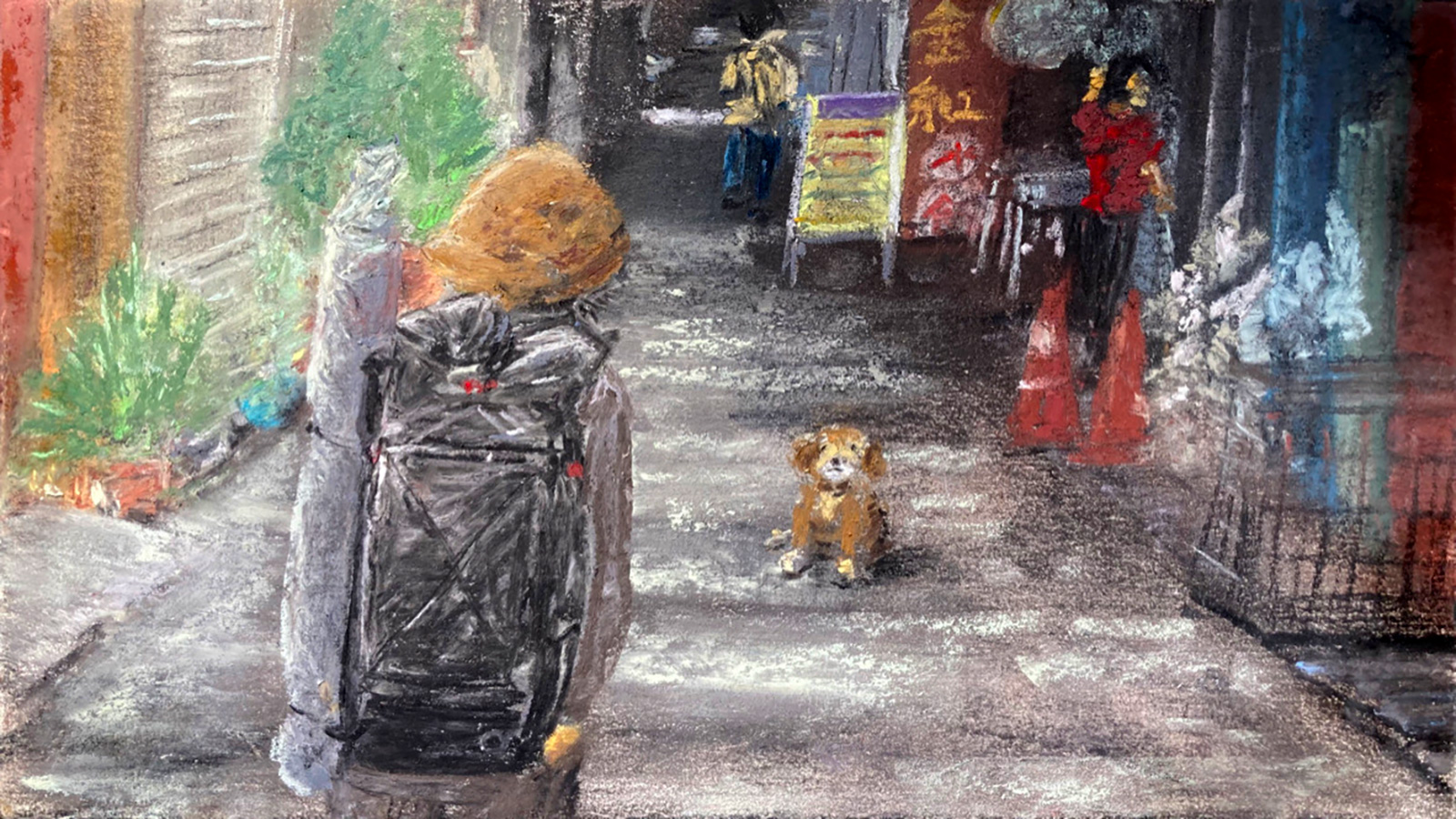#4 Lanyu Island: The Dog Who Chose Me
#4 Lanyu Island: The Dog Who Chose Me
Takaya Sasa is a traveler who has journeyed through over 60 countries, a musician who plays the horsehead fiddle and kalimba, a researcher of raw food and vegetarian cooking, a pastel artist, and more. Today, he lives a self-sufficient, self-built lifestyle on the banks of the Shimanto River in Kochi Prefecture, Japan.
In 2024, after 25 years of traveling, Sasa embraced the world of ultralight hiking. With a dramatically lighter pack, he spent two months walking across Taiwan.
His stories—encounters with everyday people and glimpses into local life that only a walking journey can offer—are deeply compelling. And we couldn’t help but wonder: what happens when someone like Sasa adopts the ultralight mindset? What does he notice, and how does it change the way he travels? That curiosity is what led us to invite him to contribute to the Yamatomichi Journal.
Before setting out on what would be his first real hike in Taiwan—to Jiaming Lake—Takaya found himself with a bit of spare time. Making use of his ultralight mobility, he embarked on a spontaneous one-night trip to Lanyu (Orchid Island). There, he met a dog and ended up traveling with it, was moved by the experience of using a floorless tent for the first time, and once again found himself on a journey filled with encounters and discoveries.
Freedom from packing stress
“I’ve successfully secured the permit for Jiaming Lake starting next Monday.”
That was the message from Lin. Just as he had advised, waiting a bit before heading into the mountains was the right call. The weather had been persistently bad, and the cold was surprising even to the locals. But forecasts predicted it would clear up at the start of next week. Still, with a few free days left, I wondered how best to spend them.
By then, several days had passed since I arrived in Taiwan, and I had already begun to uncover the many benefits and possibilities of going ultralight. One of the first discoveries came from a small but meaningful experience.
One morning, I had to leave my lodging suddenly and was worried I wouldn’t make it to the bus in time. But to my surprise, packing up took no time at all. Thanks to that, I made it to the bus with time to spare—and I found myself genuinely impressed at how effortlessly everything came together.
I hadn’t anticipated that going ultralight would also lighten the stress of packing. But for me, this was revolutionary. After all, when you’re traveling, packing is a daily ritual. Eliminating that hassle changes everything. You want to finish quickly and head out feeling fresh and unburdened, ready to make the most of the day.
It brought back memories of traveling by horseback through Central America in my twenties, when packing up every morning took at least an hour and always felt like a chore. On rest days, when I didn’t need to pack, I remember feeling an almost physical relief at being able to skip that one exhausting task.

Packing the horse was always like this—loads often shifted during travel, so gear stress was constant.
Embracing ultralight travel brought about some unexpected shifts in how I moved through the world. Before arriving in Taitung, I had checked out of my lodging in Taipei and was walking with my pack when I came across a bike rental shop. On a whim, I decided to rent a bicycle and set off on an overnight cycling trip—just like that, with my backpack still on. This kind of spontaneous decision-making would have been unthinkable back when I traveled with a heavy load. It really made me reflect on how much my actions in the past had been restricted by the weight I was carrying.
As I wondered how to spend the few free days before my planned hike to Jiaming Lake, I decided to visit Lanyu (Orchid Island), located about 60 kilometers east of Taitung. I boarded a ferry at the port and set off on a 90-minute voyage across the sea. When the arrival announcement came, I stepped out onto the deck to take in the view of the island. I saw people milling about at the small harbor, and imagined their stories—perhaps that mother and daughter were there to welcome a father returning from the Taiwanese mainland?
It was a quiet, meaningful moment—a small story unique to sea travel, different from journeys by land or air. I find myself deeply cherishing these fragments of everyday life that I encounter along the way, and the time to simply pause and wonder about the lives of others.
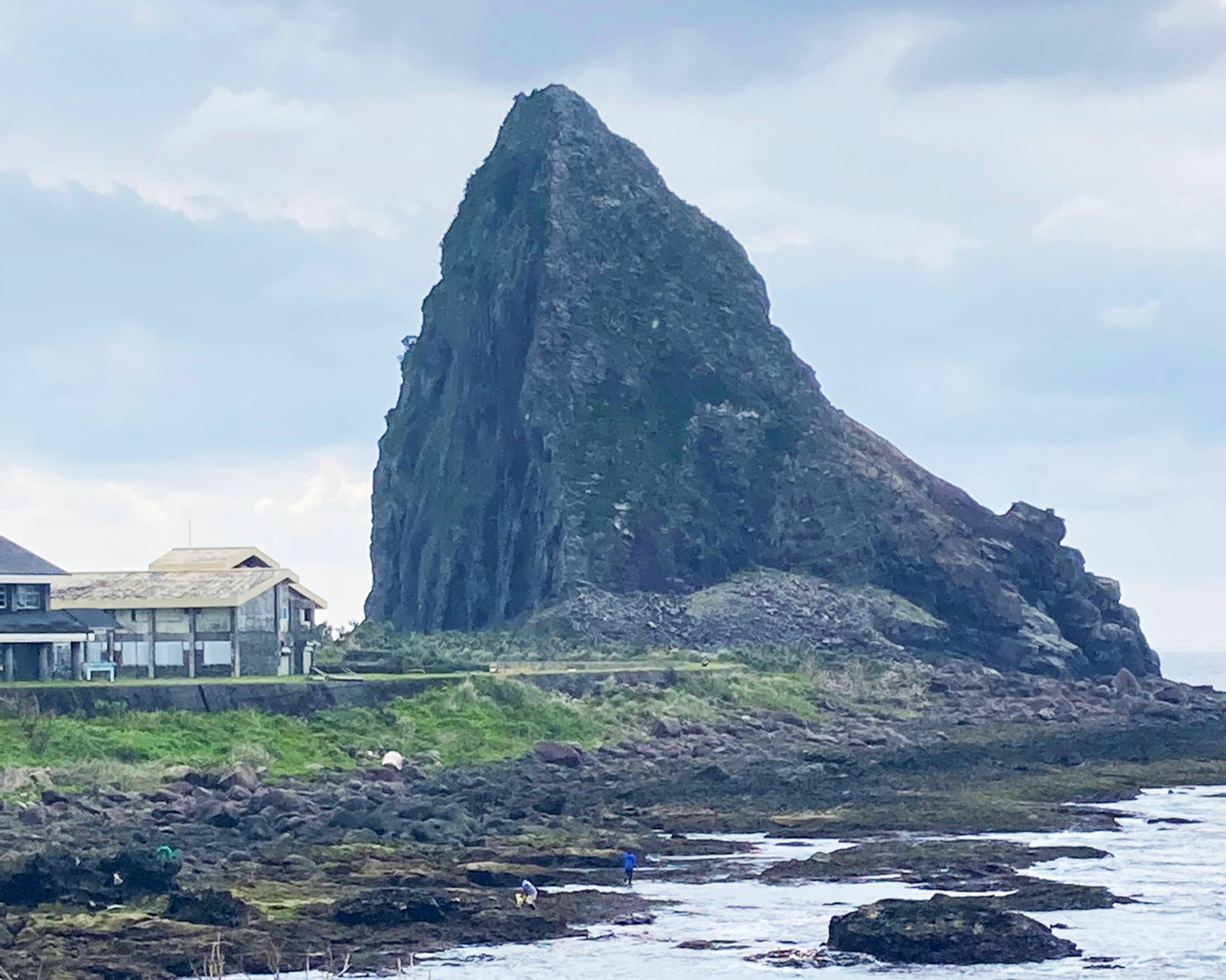
Just as I stepped off the ferry, I spotted a 7-Eleven right near the port. It looked like there wouldn’t be many shops around the island, so I decided to stock up on enough food to last me through today and tomorrow. I was hoping to wild camp somewhere tonight, after all.
I had come to Lanyu Island purely on a recommendation from a Japanese friend who had visited before and told me, “It was really great.” That was all I needed to hear. I figured that once I started walking, the island would begin to reveal itself to me.
With no particular destination in mind, I just set off in the direction that felt right. The island is small, so there were really only two choices: head west and walk clockwise, or go east and walk counterclockwise. The harbor town to the east caught my eye, so I decided to go counterclockwise and see where the road would take me.
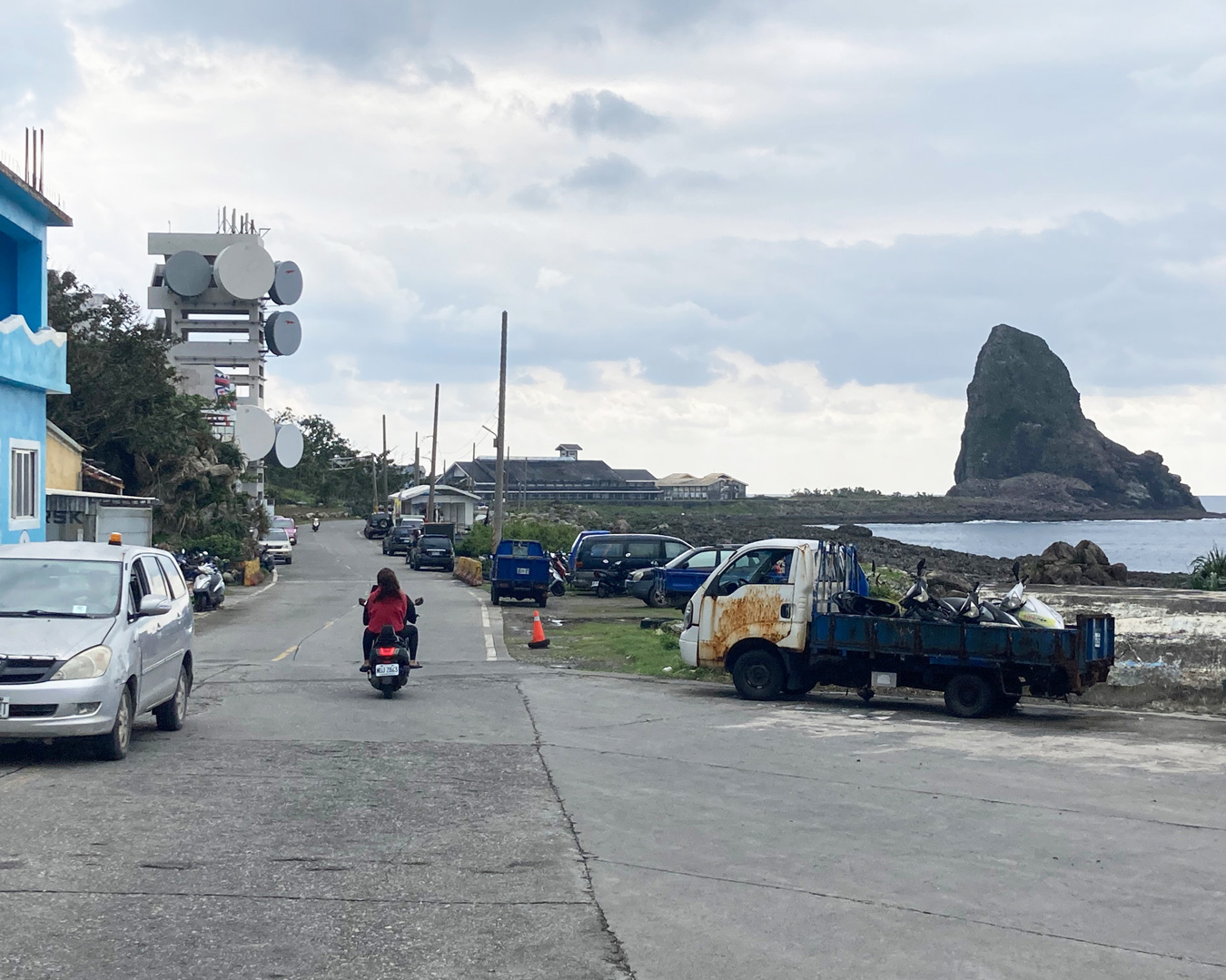
Heading east from the port as a light rain begins to fall.
Walking through what seemed to be the port’s main street, I found that all the shops were closed and the area felt deserted. It must be the quiet off-season of winter. Come to think of it, there was only one other group of tourists on the ferry besides me. But perhaps this is actually a good thing—getting to see the island in its true, tranquil state.
Once I passed through the port town, the view suddenly opened up—ocean, sky, and the island’s rugged landscape stretching out before me. The simplicity of the natural scenery stirred something inside me. In that quiet, inner response, I felt reassured that I was moving in a direction that truly resonated with my heart.
As the road gradually turned more rural, I started to see the infamous wild goats I’d heard about. And indeed, they blended into the island’s scenery perfectly. But more than anything, it was the dogs—so many dogs! Packs of them barked “woof, woof” from all directions as I passed. I kept reassuring them—and myself—saying, “It’s okay, I’m just passing through,” while picking up my pace just a little. Some had collars, some didn’t, so it seemed like both owned and stray dogs roamed freely. They would bark and follow for a bit, then eventually lose interest and turn back. Then a new group would appear and do the same. Clearly, they each had their own territory.
Most of the dogs would bark and move on, but then I noticed a single black dog trailing behind me. Unlike the others, she didn’t turn back. I kept walking, assuming she would give up eventually, but she stuck with me. I started to worry a little and asked her, “Aren’t you going to go home?” That’s when I noticed she didn’t have a collar. Hmm, maybe she’s a stray—and if she wants to come along, well, I suppose there’s no harm in letting her.
As we walked together, I started to feel a bit like Momotaro, the hero from the old Japanese folktale, and this dog began to feel like my travel companion. I decided to stop resisting and said aloud, “Alright, let’s walk together.” At those words, she perked up and trotted ahead of me, as if she’d just been waiting for my permission. Maybe she’s going to show me around her island?

And then, quite mysteriously, I ended up traveling with this black dog for the next two days.
As the sun began to dip toward the horizon, I found a pleasant spot for the night—a grassy stretch on a small peninsula that looked perfect for wild camping. The wind was strong, but I decided to pitch my tent there and sleep under the open sky. A thick layer of clouds hung above the sea, so it seemed there would be no sunset that evening, despite my hopes.
Thoughts on floorless tents
I lay back on the grass, closed my eyes, and let myself sink into the moment. Just outside the tent, the black dog was still there, quietly keeping me company. What a joy today had been, thanks to this unexpected travel companion. I felt so grateful. Such a small presence, and yet she brought such a deep sense of comfort as night fell. It truly felt like a dream I had once imagined—someday, I’d like to travel with a dog—had quietly come true.
At some point, I must have fallen asleep. I woke to the loud sound of rain. The weather, which had seemed to be clearing, had worsened again while I slept. Concerned for the dog, I opened my eyes, propped myself up, and looked around. That’s when I saw it—just her hindquarters poking gently under the edge of the tent.
It seemed this gentle, considerate dog had been torn between wanting to take shelter and not wanting to intrude. She had tucked just the very end of her body under the tent, enduring the rain outside while remaining mostly in the open.
Lifting the edge of the tent, I peeked out and asked, “Are you okay?” She looked back at me with a startled little expression, one that made my heart ache with affection.
She was soaked and trembling. “Come on in—you’ll catch a chill,” I said softly. With quiet hesitation, she stepped fully into the tent. “You were waiting for permission, weren’t you? I’m sorry,” I murmured without thinking. She curled up on the dry grass inside and, with a visible sense of relief, began to breathe softly, falling into sleep almost immediately.
Watching her settle in like that, I found myself deeply moved. Here we are, sleeping together in the rain—and how glad I am that I brought a floorless tent.
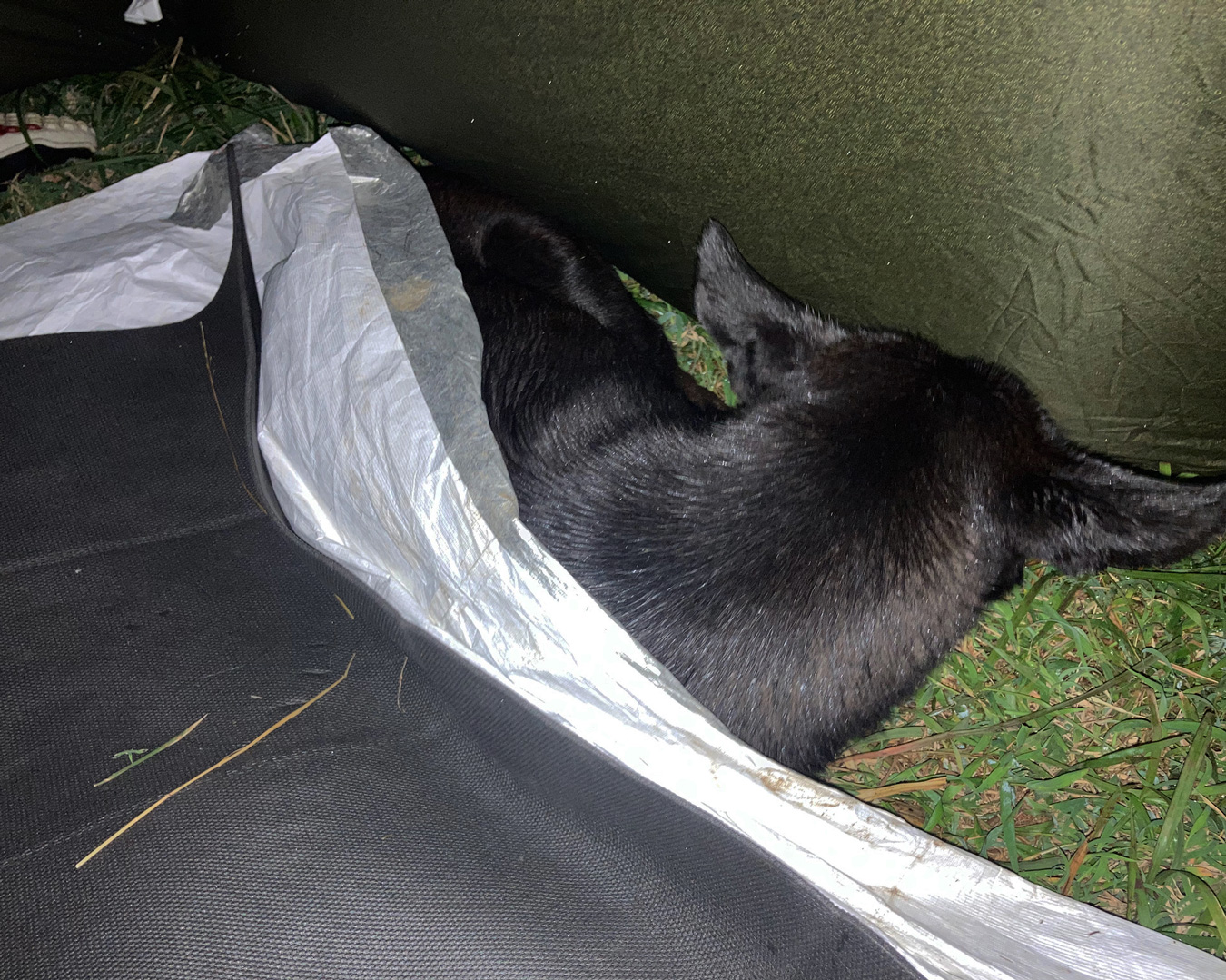
With the sound of rain and the dog’s soft breathing by my ear, I close my eyes once more and wait for morning.
This journey also marked my very first experience sleeping in a floorless tent. I’ve spent countless nights in tents before—so many that I’ve lost track. When I traveled through Central America on horseback, for example, I slept in a tent every single night for an entire year.
Still, this was my first time actually spending the night in a floorless shelter. Until I tried it for myself, I was filled with doubt and hesitation. Is this really okay? I wondered. More specifically: Won’t I get wet without a floor? What about bugs? What if there’s condensation? Wouldn’t it be better to just carry a few extra grams and bring a regular tent?
I ended up bringing the Six Moon Designs Gatewood Cape—a floorless shelter—partly out of curiosity, partly because I was committed to traveling ultralight. After two months of living with it, I found that while there are certainly a few inconveniences that come with not having a floor, those are far outweighed by the sense of openness it offers—and the creativity it demands. It’s a different kind of enjoyment. And of course, the weight savings help too. I came away feeling, Yes, this works. In fact, I may be hooked on floorless tents now. And hey, thanks to it, I even got to share the space with my canine companion.
The next morning, I woke in the dim light before dawn. Rain was still falling steadily. Honestly, it didn’t feel like I’d truly slept—I had drifted in and out of a semi-conscious state all night. Even so, my body felt somewhat rested.
Maybe it’s survival instinct. When you’re exposed to the elements like that—strong wind, heavy rain—your body stays alert and doesn’t allow itself to sink into deep sleep. Especially when your only shelter is a single thin tarp. But that heightened awareness also felt like a reconnection with something primal, something that rarely gets stirred in the comfort of everyday life. That’s part of what travel like this is about: to reawaken those deeper senses.
The black dog was still curled up beside me, sound asleep. I carefully rearranged the limited space in the tent and tried to begin my usual morning meditation. I avoided the wet edges and moved toward the center. As I shifted around, the dog lifted her head, looking at me as if to say, Are you alright? Her gaze was quiet, but watchful.
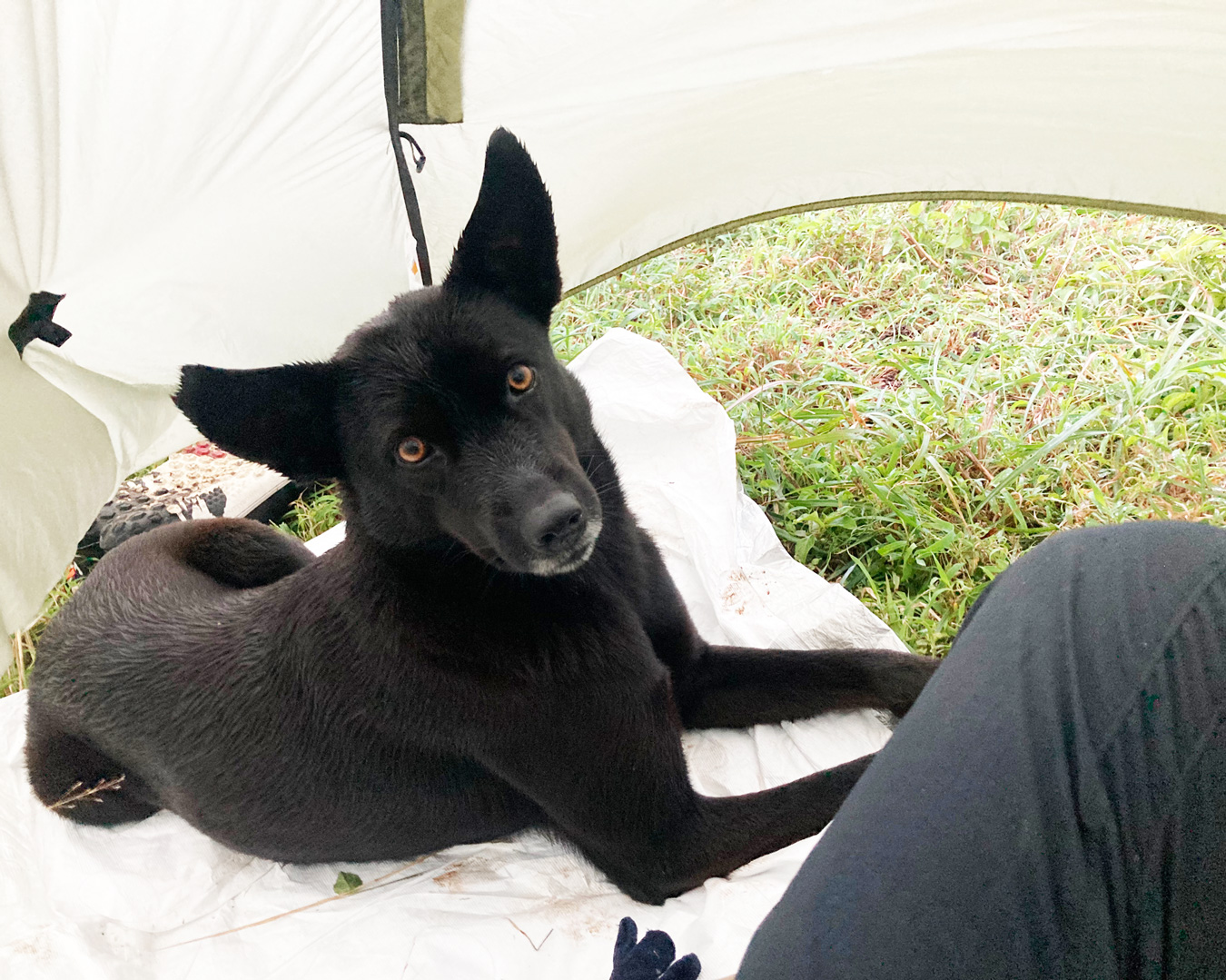
As she began to stir, I gently reached out, stroked her, and reassured her, “It’s alright, you can keep sleeping.” Once I felt her relax again, I returned to my meditation. Her body, resting lightly against my knee, was warm.
By the time I finished, the sun had begun to rise, though the rain showed no signs of stopping. With no other choice, I started packing up in the rain. It looked like it was going to be a wet day all around.
Once everything was packed into my backpack and hoisted onto my back, I decided to try something new—I turned the tent into a poncho for the first time. That’s right: the Gatewood Cape is a floorless shelter that also doubles as a rain poncho. One of the reasons I chose it was the hope that it would completely cover the morin khuur I carry on my back, keeping the instrument safe from rain.
I gave thanks to the place that had sheltered me through the night and set off. Beyond the heavy clouds hanging over the ocean, I could just make out a faint beam of morning sunlight breaking through.
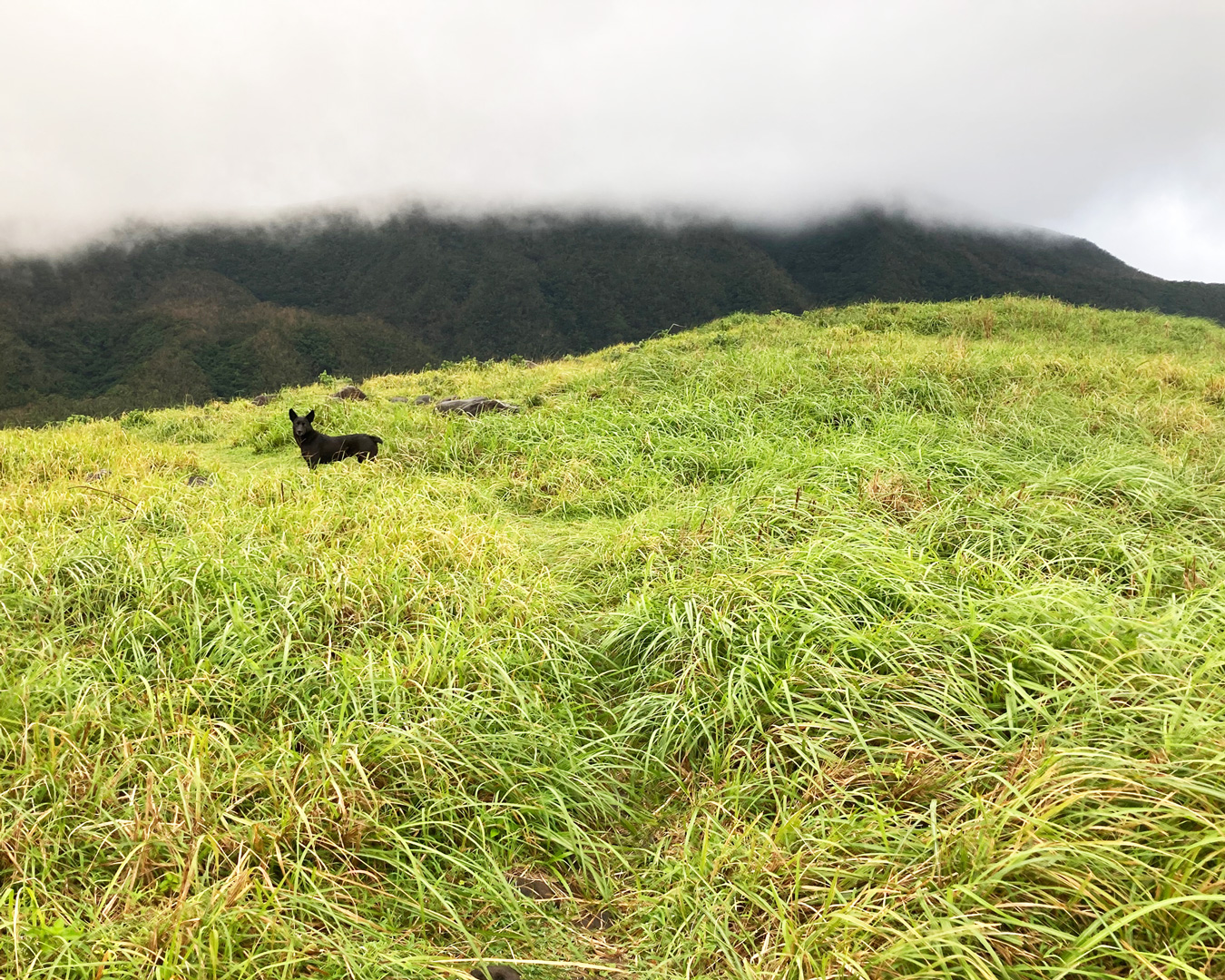
The black dog was in good spirits again this morning, happily leading the way. Alright then—off we go to slay some demons.
You might imagine that, first thing in the morning, I’d be strolling along the coast, gazing out at the sea, and feeling elated to be surrounded by the island’s beauty. But in reality, the wind and rain were relentless, and I found myself just bracing through it. The wind, especially, was brutal! Maybe this is what winter weather is like on this island?
Since I was walking right along the coastline, there was nothing to block the gusts—no matter where I was, the wind whipped straight through. The poncho did a decent job of keeping the rain off, but it flapped noisily in the wind, which quickly became annoying. Pros and cons, I guess.
Then I noticed a hole in the poncho. Ugh. Maybe I snagged it when I sat down earlier? It hit me that I needed to be more mindful when using this as an outer layer—it’s not just shelter, it’s gear that needs care. I’ll definitely be more cautious moving forward. You never really know how something works until you try it out in the field. Still, discovering the damage definitely brought my mood down a bit.
As I continued walking, I passed through a few small, scattered villages. I had been a little worried about finding drinking water, but a kind local pointed me to a spring bubbling up from the rocks along the coast. I filled my bottle there, grateful for the guidance.
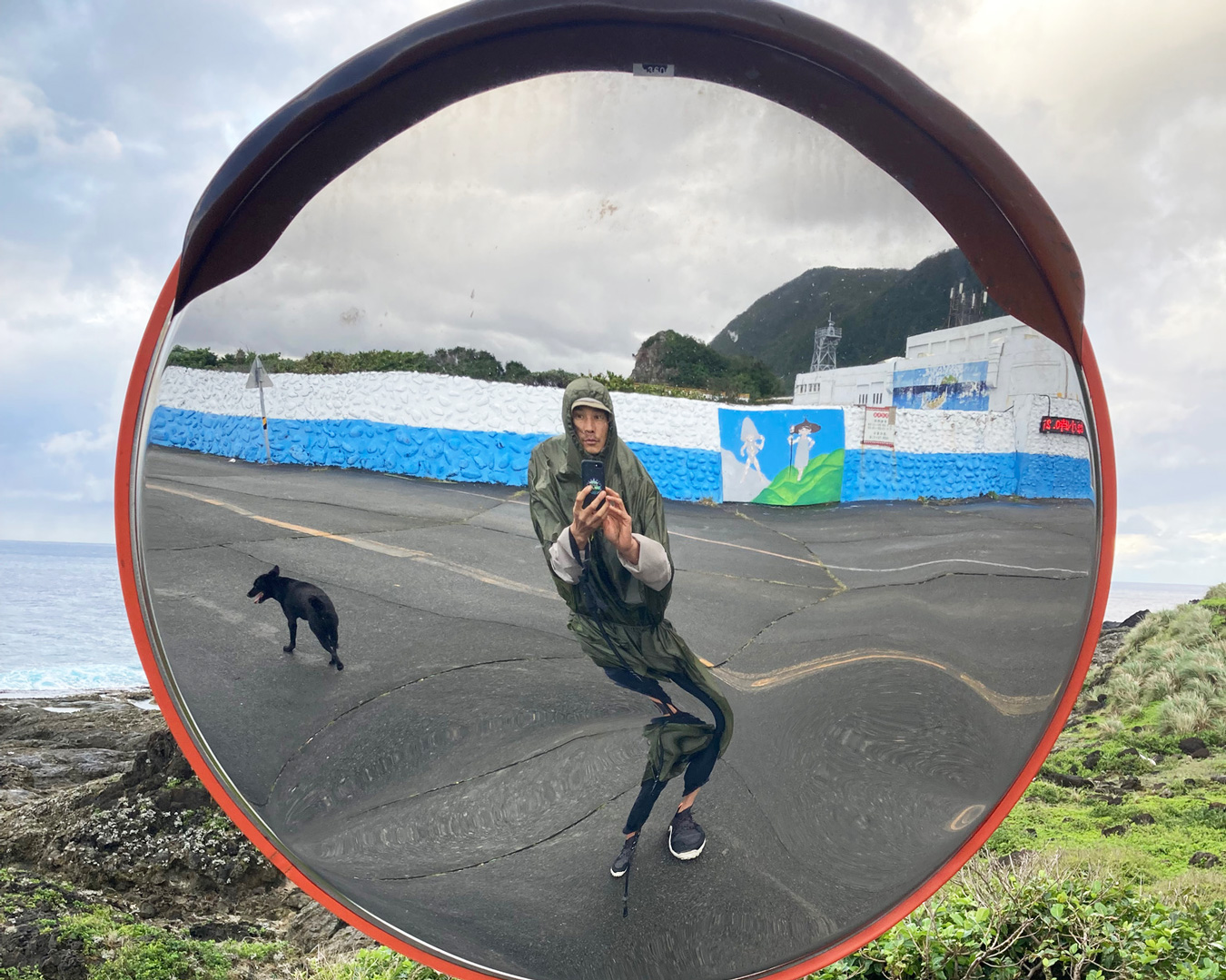
Curious about how I looked in the poncho, I leaned in to check my reflection in a roadside mirror.
A sudden farewell
The moment we said goodbye
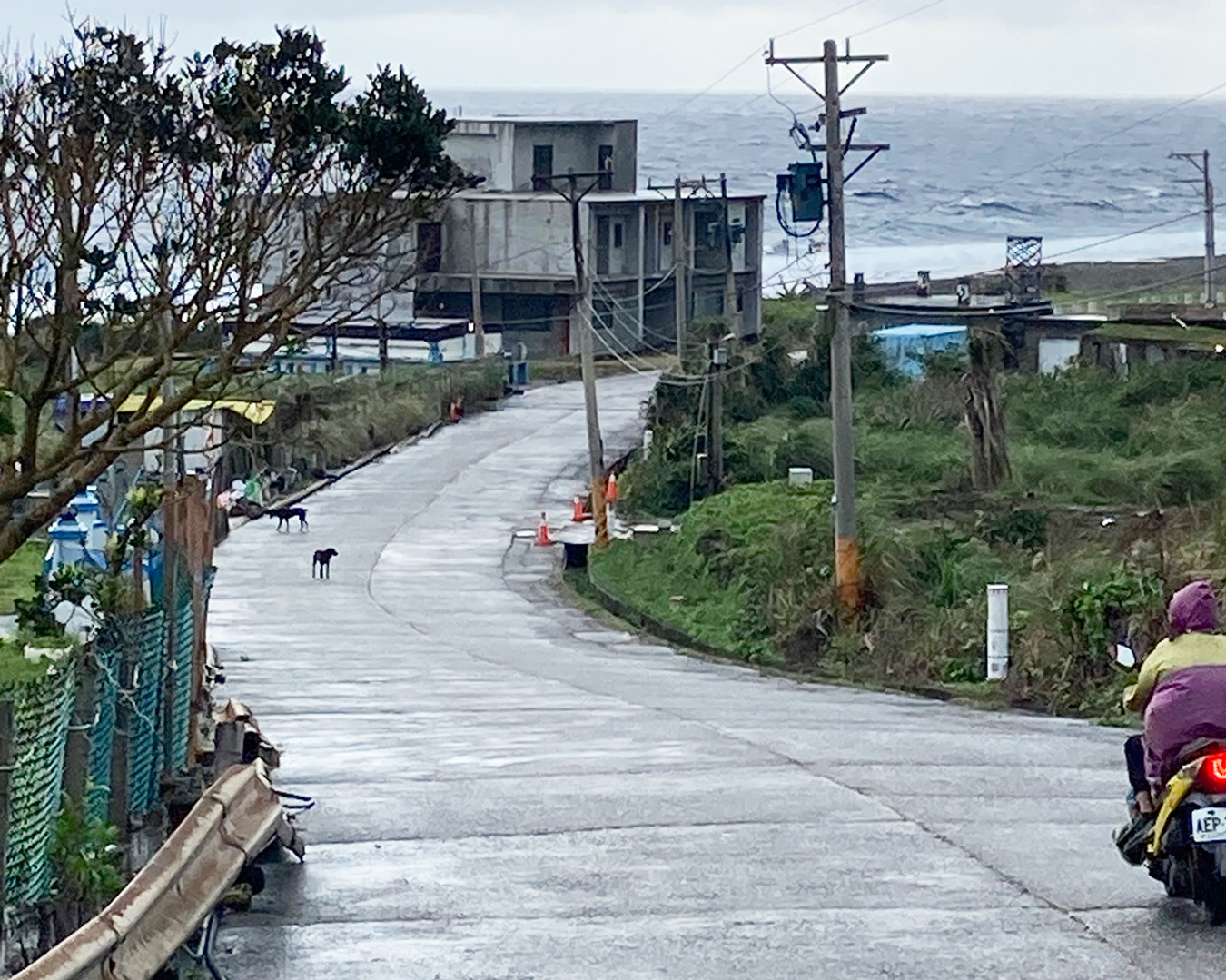
The moment we said goodbye
Thoughts on synthetics
I slept so well. Back in a dorm bed in the city of Taitung after returning from the island, I realized just how exhausted I must’ve been from days of walking through relentless wind and rain. I got up wearing just my shorts and checked the clothes I’d hung beside the bed the night before. To my surprise—everything was completely dry. And not a trace of smell!
Honestly, I had debated whether or not to do laundry at all when I arrived late last night. The hostel didn’t have an outdoor drying area, and the idea of putting on clothes the next day with that dreaded damp, musty smell? Terrible. But more than that fear, I had a stronger urge to wash away the rain and grime and start fresh. So I tossed all my clothing into the washing machine—except for the one pair of shorts I kept for sleeping (yes, I mean everything, as listed in #2 Getting Ready: Ultralight Gear & MYOG).
You’d think it would’ve made more sense to wait until morning, but I only had one set of hiking clothes. I’d need to wear them again the next day, so it felt smarter to get them washed overnight—even if it meant risking that damp smell. I took the chance… and the next morning? Everything was bone dry and odor-free. I was honestly amazed and delighted. Another discovery, all thanks to the fabric.
Up to now, my preferences leaned toward natural materials—maybe because of my reverence for nature, even in what I wear. Whether day-to-day or while traveling, I almost always chose natural fabrics. Outside of rain gear, I hardly ever wore synthetics. (Between you and me, I even used to think synthetics looked kind of uncool…)
But it wasn’t just about looks—I also found synthetics less comfortable to wear. Still, for this journey, I made a deliberate shift. I told myself: This time, I’m committing fully to going ultralight. Forget style and feel—prioritize weight. I let go of my usual preferences and gave something new a try.
And now? I totally get it. Synthetics are light, durable, dry fast, and don’t hold odors. For minimalist travel with limited gear, their performance is exceptional. Truly, truly impressive.

This one isn’t synthetic, but in terms of materials, the piece that truly impressed me on this trip was the Yamatomichi DF Mesh Merino Long Sleeve. Made of 88% merino wool and 12% nylon, it really surprised me. I had expected the nylon-based items to dry quickly—that’s no shock—but I was amazed at how fast this top dried despite being mostly wool. It dries so quickly, in fact, that I could put it on straight out of the washer right after the spin cycle.
It’s also incredibly light and warm. What I love most, though, is the feel of the fabric—thanks to its natural fiber base, it’s exceptionally comfortable to wear. I even use it like a sweatshirt at home, lounging in it as casual loungewear. Honestly, I’d love to see this material used for tights as well. If there were a matching top and bottom set, it’d be the perfect at-home outfit.
For the record, the original color was Taupe, but I over-dyed it navy myself—so it doesn’t match the product color exactly.
Just knowing I could wash my clothes anytime brought a surprising lightness to how I approached the rest of my journey. And if the weather wasn’t too cold, I realized I could even put things on straight after the spin cycle and let them dry on my body—without discomfort. In fact, that’s exactly what I did many times during the rest of the trip. Expanding from natural materials to synthetics didn’t feel like a betrayal of my love for nature—it actually aligned with it. It meant I could fully enjoy nature without the stress of managing heavy or slow-drying gear.
There’s another layer to how I think about clothing: this single outfit had to do it all. I’d be hiking, camping, and even performing music in public wearing it. So of course, I couldn’t help but care about how I looked. In its own way, style is also a kind of function—and an important one. Dressing well is fun, too.
Still, switching from my usual comfortable natural fibers to synthetic materials left me feeling a bit unsettled, especially when standing in front of others. That discomfort seemed to highlight something deeper—my inner desire for approval, for being seen a certain way. It made me confront the quiet expectations I carry about how I present myself to the world.
In that way, wearing synthetics became a new kind of challenge—an opportunity to let go of the worldview and aesthetic I had built for myself over the years. I’m not entirely at ease with synthetic clothing just yet, but I also recognize how it’s opened up a new world for me. And I’m genuinely glad to have discovered that.
After waking to a clear and refreshing morning, I messaged Lin to say, “I’ve made it back to Taitung.” He replied with an invitation to dinner at his home that evening. When I arrived, he had a hot pot meal prepared—Taiwanese huo guo, it turns out. It was different from Japanese nabe, but spicy, delicious, and so satisfying. And as always, there’s something about hot pot that brings people together—it becomes a festive occasion.
I felt warmly welcomed into Lin’s family, and in that moment, Taiwan—this foreign land—began to seep deeper into my heart. It reminded me once again that human connection is a form of travel you won’t find on any map. Through the people you meet, you encounter new worlds and cultures—one interaction at a time.
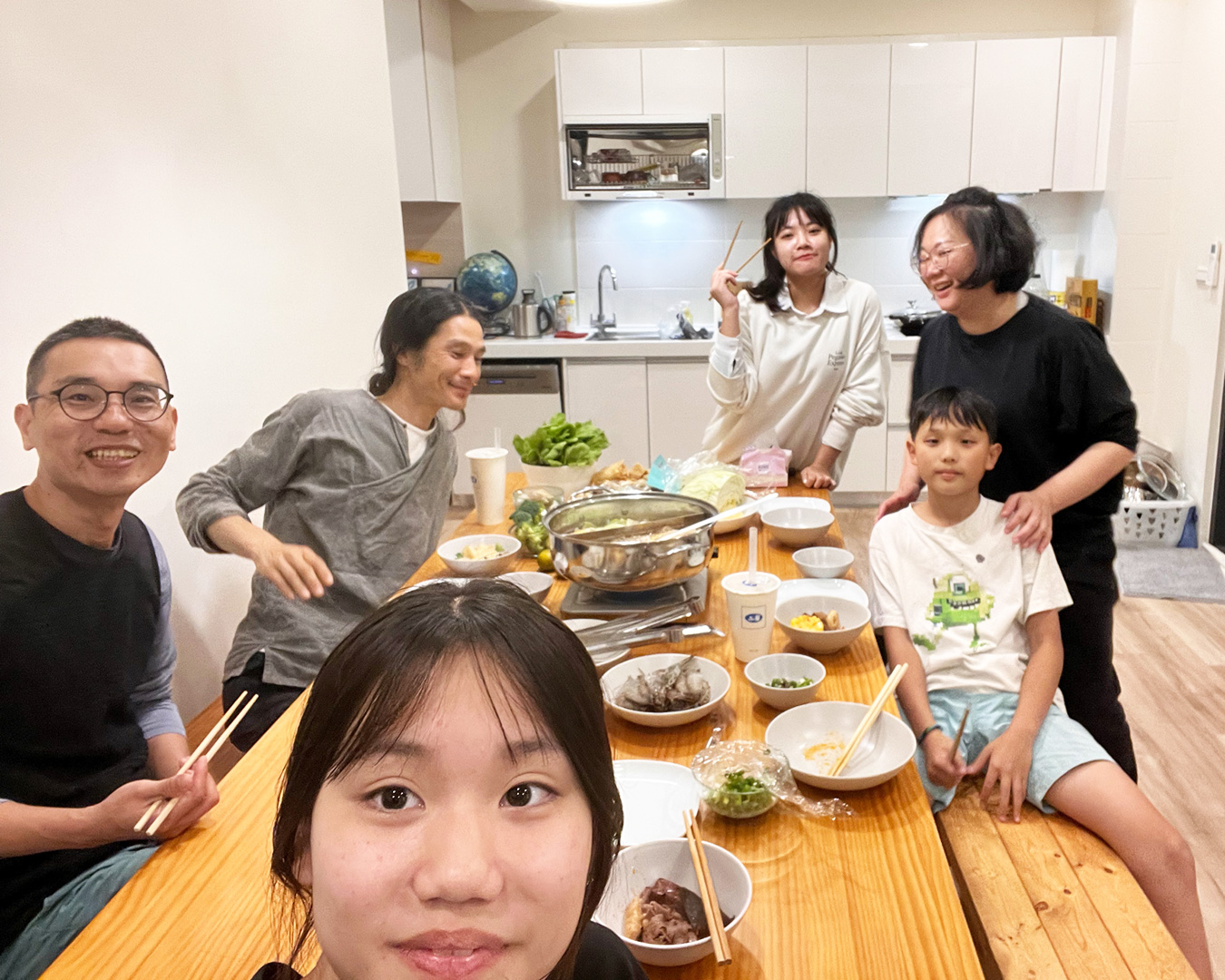
I spent a joyful evening with Lin’s family, joined by his university-aged niece who was also visiting.
And now, tomorrow marks the beginning of the mountain journey I’ve long dreamed of—off to Jiaming Lake.
To be continued..
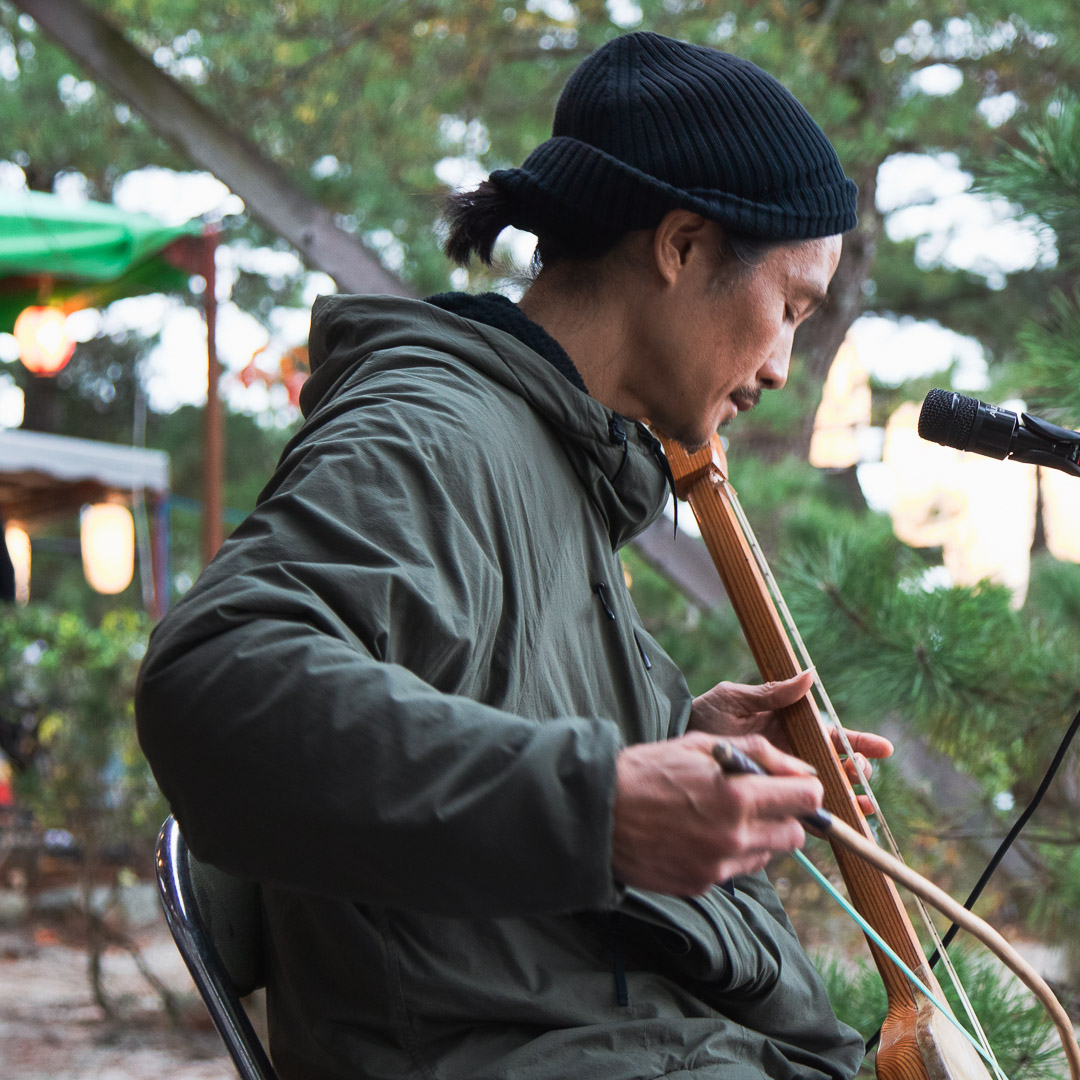
Born in Tokyo in 1979, Takaya Sasa has traveled through more than 60 countries, learning from life on the road—whether through cooking, music, shoemaking, or other crafts.
In 2013, he relocated to the banks of the Shimanto River in Kochi Prefecture, Japan, where he began building a lifestyle rooted in the land.
In 2016, he published The Salad Book (ささたくや サラダの本), a collection of raw food recipes and travel essays. He began creating pastel artwork in the summer of 2020, and in 2023, he self-published two books: TABI no Ohanashi-kai, a collection of travel stories, and Kurashi no Kage, a visual diary of daily life along the Shimanto.







